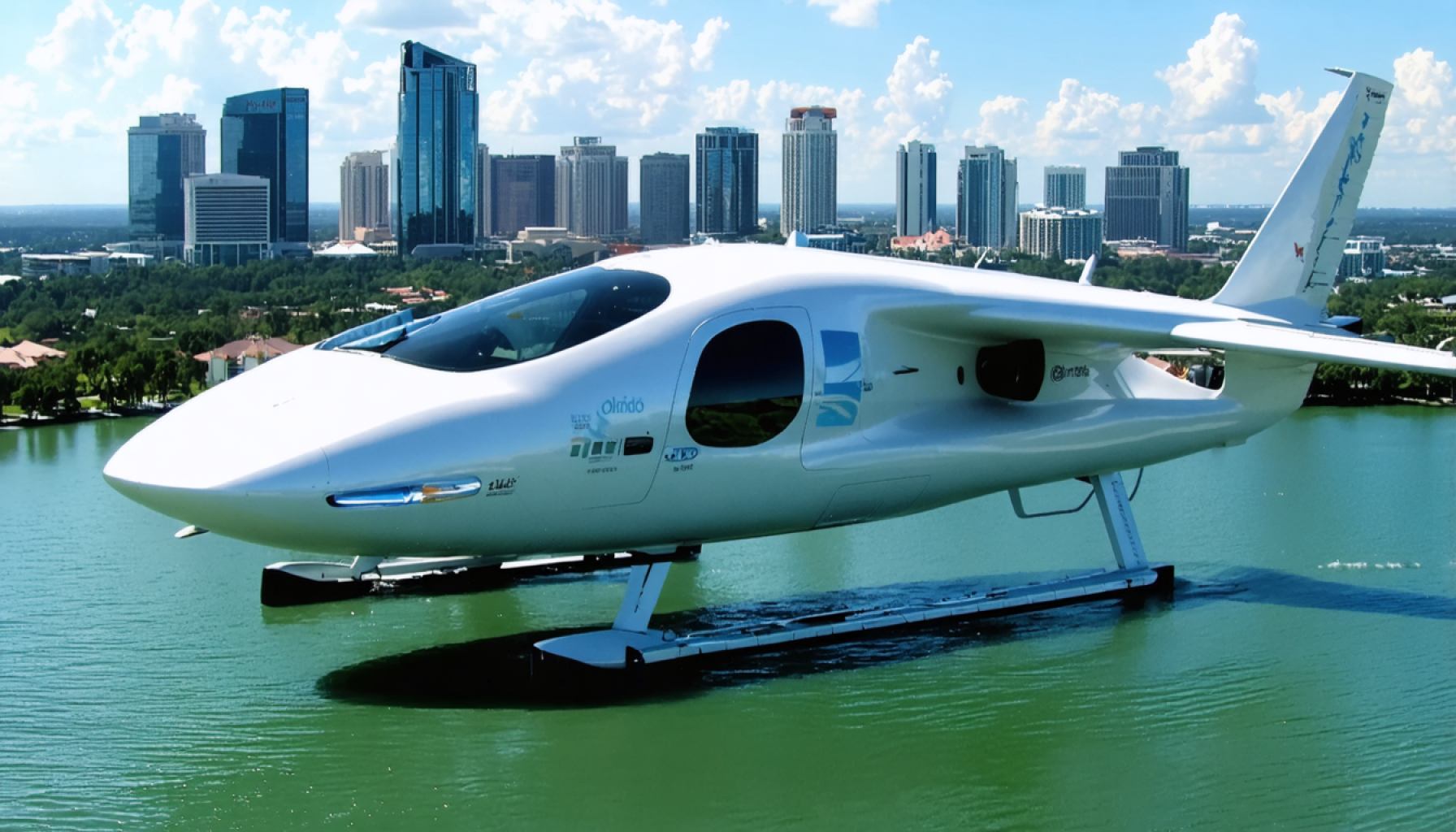- Orlando is embracing the future with plans for flying cars by 2028, aiming to revolutionize urban mobility.
- This initiative aims to alleviate traffic congestion and address environmental concerns through innovative air transport solutions.
- Visionaries and engineers are collaborating to create sleek, silent vehicles reminiscent of those from classic science fiction.
- Challenges include airspace management, safety regulations, and integration with existing systems, but creativity and determination drive progress.
- The vision promises a daily commute above the city, blending convenience with a sense of wonder and adventure.
- The project’s success could redefine transportation, suggesting the sky is just the start of a new chapter in commuting.
Amid the sun-bleached boulevards and bustling theme parks of Orlando, a vision of the future is quietly materializing. Floating above the horizon, the dream of flying cars—once the stuff of science fiction—seems tantalizingly within reach. By 2028, this city might trade asphalt for airways, promising a revolutionary step in urban mobility.
Picture the skyline painted with sleek, silent vehicles cruising high above the traffic snarls below. As the world collectively grapples with congested streets and environmental concerns, Orlando’s forward-thinking initiative offers a glimpse into a more efficient and innovative future. This isn’t just a flight of fancy; it’s a calculated leap into tomorrow.
Engineers and visionaries are collaborating to transform this dream into reality, weaving together technology and ambition. Potential designs flirt with the elegance and fluidity of the iconic vehicles from a beloved vintage cartoon, capturing imaginations and rekindling hopes for a future where convenience and adventure dance in harmony.
Of course, challenges loom. Airspace management, safety regulations, and the integration of this airborne fleet with existing systems present formidable hurdles. Yet, the determination and creativity fueling this movement suggest that what was once an impossible dream is now a promising endeavor.
Imagine an Orlando where your daily commute involves soaring over sun-dappled streets, where the everyday grind is infused with a touch of wonder. As the countdown to 2028 continues, one thing is certain: the sky is no longer the limit. Instead, it might just be the beginning of a thrilling new chapter in transportation history.
Flying Cars in Orlando: Will Sky-high Dreams Become Reality by 2028?
Real-World Use Cases
Flying cars have the potential to transform urban mobility in ways that ground vehicles cannot. For instance, they can shorten commute times significantly and provide an alternative to congested roads. In Orlando, flying cars could take tourists from the airport directly to theme parks, cutting travel time dramatically. Additionally, air taxis could serve as rapid emergency transport for medical supplies and personnel.
Features, Specs & Pricing
Modern flying cars are designed to be comparable in size to helicopters but are generally quieter and more efficient. They often use advanced technologies like vertical take-off and landing (VTOL), eliminating the need for long runways. Companies such as Airbus and Uber Elevate are working on models expected to have a range of around 100-150 miles on a single charge and speeds up to 150 mph. While pricing is still under wraps, initial services may be premium, likely to cost hundreds of dollars per ride before potentially dropping as technology advances and scales.
Market Forecasts & Industry Trends
The urban air mobility (UAM) market is rapidly growing, with estimates reaching $1.5 trillion by 2040, according to a Morgan Stanley Research Report. Cities like Orlando are prime candidates for UAM because of their layout and tourist economy, which can justify the early adoption of such technologies. Major players like Volocopter, Lilium, and Joby Aviation are investing heavily in R&D, indicating a strong belief in the technology’s potential.
Reviews & Comparisons
When evaluating flying car models, comparisons often focus on range, safety features, and efficiency. For example, Joby Aviation’s prototype is known for its longer range and quieter operation compared to its competitors. Meanwhile, Volocopter emphasizes safety with redundant systems and easy piloting.
Controversies & Limitations
Several challenges need addressing before flying cars become mainstream. Air traffic management poses a significant obstacle, needing a comprehensive system to prevent mid-air collisions. Furthermore, regulatory approval is a concern, particularly around safety standards and environmental impact. There are also worries about the noise pollution flying cars might introduce, despite technology developments aimed at minimizing this.
Security & Sustainability
Security involves ensuring that flying vehicles are safe from hacking and misuse. Systems must be impervious to cyber threats to avoid catastrophic incidents. On the sustainability front, many flying cars use electric propulsion to help reduce emissions associated with traditional vehicles. However, battery life and power consumption are areas requiring further innovation to make this a truly viable green option.
Pros & Cons Overview
Pros:
– Reduced Traffic Congestion
– Fast Commute Times
– Innovations in Safety and Technology
Cons:
– High Initial Cost
– Regulatory Hurdles
– Noise and Environmental Concerns
Actionable Recommendations
1. Stay Informed: Keep an eye on developments in flying car technology and regulatory measures. Subscribing to newsletters from companies like Airbus or Lilium can provide up-to-date information.
2. Plan for Skill Development: As a future career consideration, exploring courses in drone technology or aviation systems may position you well in the emerging flying car industry.
3. Advocate for Public Policy: Engage with local governance to understand or influence how such technological developments could be integrated into urban planning policies.
Quick Tips
– Consider using ride-sharing apps when flying cars enter the market to offset initial high costs.
– Suggest using flying car technology for emergency services to hasten real-world applicability and social acceptance.
– Monitor industry trends via credible sources like Forbes and The Wall Street Journal to gauge adoption rates and maturity of the technology.
The dream of flying cars is tantalizingly close, and early adopters like Orlando could pave the way for widespread innovation in urban transport. As we edge closer to this possible future, being informed and adaptable will be key to navigating this new dimension of mobility.
